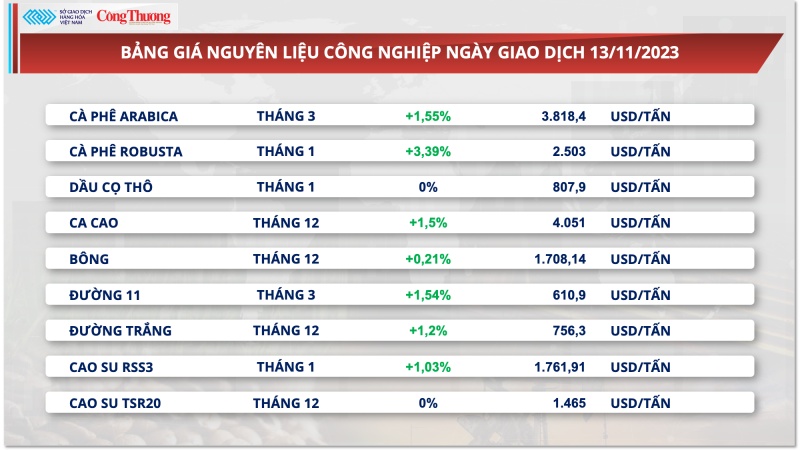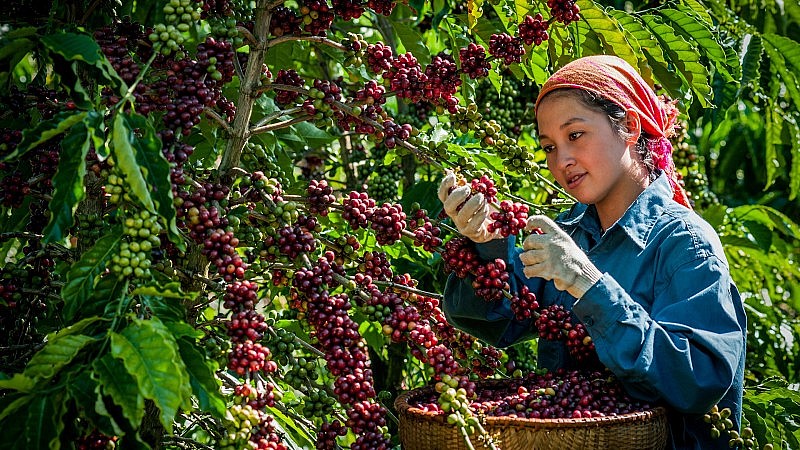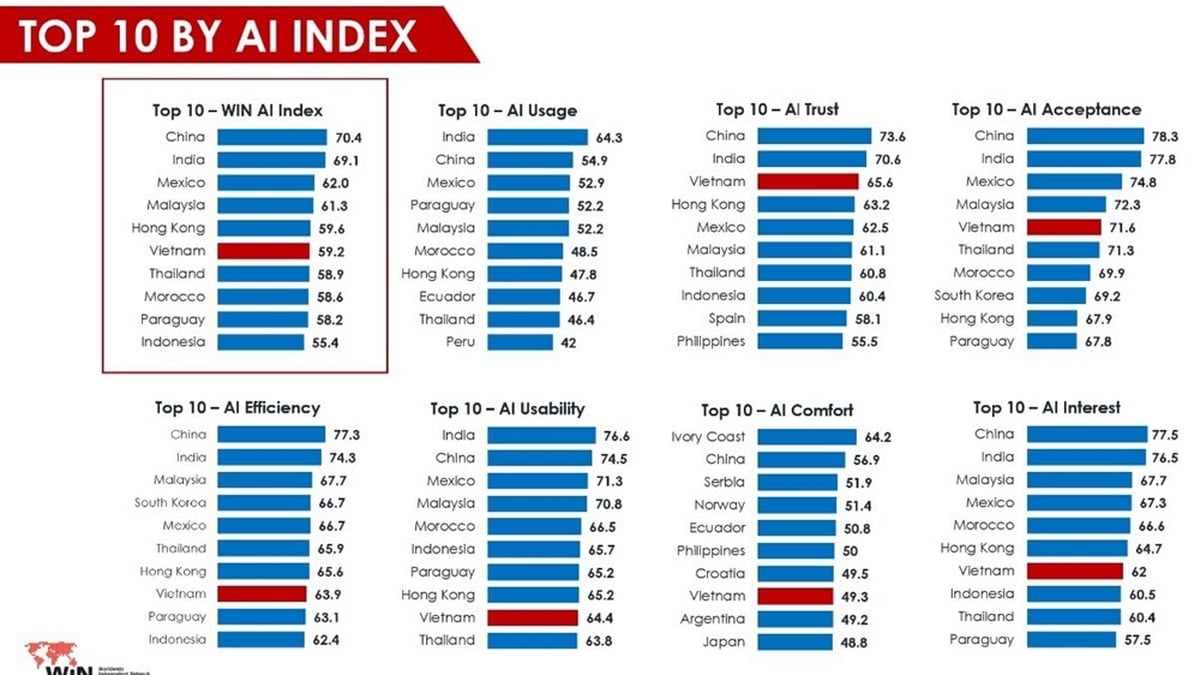According to the Vietnam Commodity Exchange (MXV), at the end of the first trading day of the week (November 13), the coffee market continued to attract the attention of domestic and international investors. At the close, coffee prices increased by 1.55% for Arabica and 3.39% for Robusta, respectively. Concerns about tight supply became the driving factor for prices.
 |
| Coffee prices continue to increase |
In the report closing on November 13, the standard Arabica inventory on the Intercontinental Commodity Exchange (ICE-US) continued to be anchored at a more than 24-year low of 302,235 60kg bags. MXV said that difficulties in the ICE-US's new inventory acceptance regulations and tight short-term supply have prevented the amount of coffee in storage from increasing.
Furthermore, record heat in Brazil with temperatures reaching 40 degrees Celsius in the main coffee growing region, has experts concerned that output will decline, thereby narrowing the supply in the 2024/25 crop year.
This morning, in the domestic market, the price of green coffee beans in the Central Highlands and the Southern provinces suddenly increased sharply by 1,200 VND/kg, bringing the domestic coffee purchase price to 58,700 - 59,400 VND/kg, about 400 - 500 VND/kg higher than in early November.
Regarding coffee exports, according to statistics from the General Department of Customs, in October 2023, Vietnam's coffee exports continued to reach a low of 43.72 thousand tons, worth 157.55 million USD, down 14.2% in volume and 6.6% in value compared to September 2023, and down 48.8% in volume and 28.0% in value compared to October 2022.
In the first 10 months of 2023, Vietnam's coffee exports reached 1.29 million tons, worth 3.28 billion USD, down 10.7% in volume and 1.2% in value over the same period last year.
 |
| Weakening supply in Vietnam is one of the reasons pushing coffee prices to high levels. |
Mr. Nguyen Nam Hai, Chairman of the Vietnam Coffee and Cocoa Association (VICOFA), said that because there is no more domestic goods to export. Previously, exports in September 2023 only reached approximately 51,000 tons, worth about 169 million USD, down more than 48% in volume and more than 28% in value compared to September 2022.
For the entire 2022/2023 crop year (from October 2022 to September 2023), Vietnam's coffee exports will reach 1.66 million tons (about 27.7 million bags, 60kg/bag), down 4.5% compared to the 2021/2022 crop year. However, the revenue still increased by 3.4% to 4.08 billion USD thanks to high prices. This is the highest turnover in crop years to date.
Notably, due to the decrease in supply, in the 2022/2023 crop year, Vietnam imported 102,100 tons of coffee from countries around the world , with a value of nearly 300 million USD. Of which, the import of green coffee in the 2022/2023 crop year was 98,600 tons, worth up to 246 million USD, up 19% in volume and 23% in value compared to the 2021/2022 crop year. Meanwhile, the import of processed coffee in the 2022/2023 crop year was about 3,500 tons, worth more than 53 million USD, down 46% in volume and down 29% in value compared to the 2021/2022 crop year.
Explaining the reason for the increase in import orders, Mr. Hai said that the country's coffee output in the last crop year decreased sharply, not enough to meet export demand. Therefore, traders have to increase the import of raw coffee for processing and export. For example, Vietnam imports green coffee from countries with lower prices, or types of coffee that Vietnam can grow less due to climate and soil, such as Arabica coffee. Vietnam imports this type of coffee from Laos because their prices are lower than in Vietnam.
VICOFA forecasts that the 2023-2024 coffee crop will be harvested later than the previous crop. Some localities such as Gia Lai, Kon Tum , Son La will harvest coffee earlier in late October, early November and harvest in late December and December 2023. The decline in supply will continue to be the driving force pushing up coffee export prices.
Vietnam currently ranks 6th in the world in terms of coffee growing area (after Brazil: 1.9 million hectares; Indonesia: 1.2 million hectares; Colombia, Ethiopia and Ivory Coast each have around 800,000 hectares). However, thanks to Vietnam's highest coffee productivity in the world, 2.8 times higher than Indonesia's, Vietnam has the second largest annual coffee harvest in the world, reaching 1.75 - 1.85 million tons.
Source link






















![[Photo] National Assembly Chairman Tran Thanh Man visits Vietnamese Heroic Mother Ta Thi Tran](https://vphoto.vietnam.vn/thumb/1200x675/vietnam/resource/IMAGE/2025/7/20/765c0bd057dd44ad83ab89fe0255b783)
















































































Comment (0)